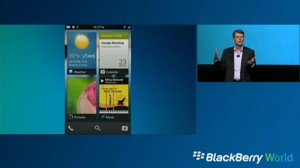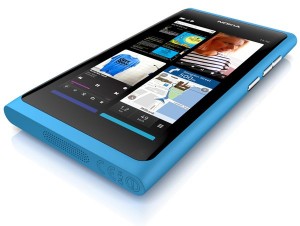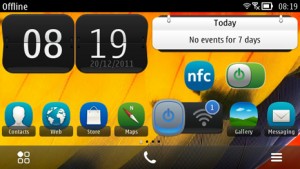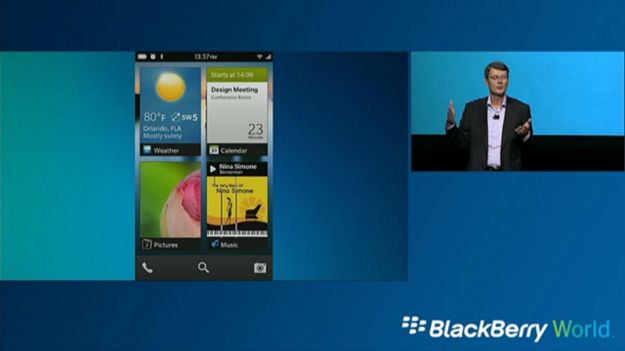With RIM in dire straits but insisting on forging ahead with its own operating system, BlackBerry 10 has been anticipated for some time, and has now had its first public showing.
So what’s new? From a design perspective, it seems that RIM has pretty much had a look at what’s on the market and made a conglomeration of other operating systems. The grid of widgets (seen below) looks remarkably like Nokia’s MeeGo on the N9 and also Windows Phone, while the notification bar and icons along the bottom look intriguingly like Nokia Belle, its latest update to the Symbian platform (both MeeGo and Belle are also shown below for comparison).



While mentioning comparisons with Nokia, it also has to be noted that the hardware showcased for BB10 had no front-facing buttons, much like the N900 and N9. The PlayBook also lacked buttons on the screen, and it’s good to see this approach to phones continuing.
One of the things shown off at BlackBerry World was BB 10’s “flow”. Unlike the approach of Apple, Microsoft and Google, BB 10 does not pause apps or hang them in a suspended state, but rather leaves them running in real time just as they were on the PlayBook. Without a physical button to bring up the multitasking panel (which is used in iOS, Windows Phone, Symbian and Android), BB 10 implements it by having the user hold their finger down and then slide to the right to see the last few apps that were used.
The benefit to a real-time multitasking ability of course is the opportunity to carry out tasks without missing a beat. Whether you’re composing an email or waiting for a video to load, you can do something else and then go back to it without any lag or needing to start from scratch, just like working on a computer. CEO Thorston Heins said that “Everything you have going on keeps running real time in the background. No other platform can do this.” This isn’t entirely true, however. It could be argued that BB 10 will be the only mainstream OS to offer it, but Heins can’t erase from history the fact that Maemo 5 and MeeGo both did and do offer exactly the same thing, and Symbian, one of the largest operating systems in the world, also offers it. So while it’s a very welcome feature indeed, Heins shouldn’t adopt the Steve Jobs path of claiming everything he did was invented by his company.
Another feature showed off was the new keyboard, which is a departure from BlackBerry’s signature physical QWERTY. While it doesn’t look like anything special, it is apparently a smart keyboard by customising itself to how you use it, recommending words it thinks you are most likely to want to use.
Another neat feature introduced was camera rewind, which basically lets you zoom in to a picture and rewind it in time. This means that the user can fix closed eyes or something else ruining a photo.
So how will it fare? BlackBerry 10 looks promising, bringing the software up to par in some cases, and exceeding the competition in others. While it’s a stretch to say that RIM is the only company to have software that lets users multitask in real time, and the design looks more than a little inspired by Nokia’s offerings, it’s encouraging to see a company stand up and continue that trend, acknowledging that with phones being used increasingly like computers, they should act like it too.




You should do research on Flow. webOS has long implement the “peek” pane on their discontinued Touchpad webOS 3.0
It’s so sad that Blackberry are mutilating even more stuffs from webOS without givin proper credits.
Thanks for the comment. I have seen Flow, actually RIM is saying BB10 “has Flow”. It’s sad that they’re taking other companies’ technologies, but it’s always good to see it living on. BB already started going without any buttons with the PlayBook, so adopting the N9’s interaction for control is a natural progression really
TAT is a company that designs interfaces, TAT helped creating MeeGo interface and other operating systems, now that RIM bought TAT, I think that design belongs more to RIM than Nokia
Excellent point. People, especially tech blogs, dont do enough research before they slam RIM. The article over all is a very good piece and gives credit to RIM but with a slight negative bias which i dont think is completely justified. Thats me any way.